The discussion triggered on my Instagram feed by a post on rice Dhokli compelled me to bring one of my oldest post forward. Dhokli, as I said, is enjoyed in numerous ways, swipe through to see the few recipe posts I have on the blog.
I remember my first exposure to dhokli wasn’t about eating it but making it in my Nani’s kitchen. A kitchen that was the most charming and happening place in the entire house. Ba as all of us called her had a special place where she would sit with her paan-dan while she oversaw the daily humdrum of the kitchen and larder. Every summer and Diwali when the entire clan got-together it would be 30-35 of us, the kitchen remained bustling with activity throughout the day. Wonder how these huge households functioned like a well-oiled machine!! If we (the kids) ran out of entertaining activity option we would ram into the kitchen, hungry most of the times….there were 13 of us, so even if half of us barged into a bustling kitchen it was a task to manage us, to keep us all occupied as kids do create a lot of inconivience ( a polite word 😉). To keep us occupied Ba always had a task to assign, one of which was to roll and shape the Dhokli that were later added into the Tuver Na Baakra (a stew of dried whole pigeon peas). It was a hearty dish, a one-pot meal that was convenient to feed the brood!! We pinched out the dough to mould it into figures of our choice, Ba also made some and always sneaked a coin in the Dhokli promising a reward to the person who found the paisa-wali dhokli in her/his morsel… her way of ensuring we ate well, had fun while cooking and connected to the food we ate. In the hope of getting a reward, we ate till our optimum capacity, it also meant we weren’t going to be hungry in the next one hour…
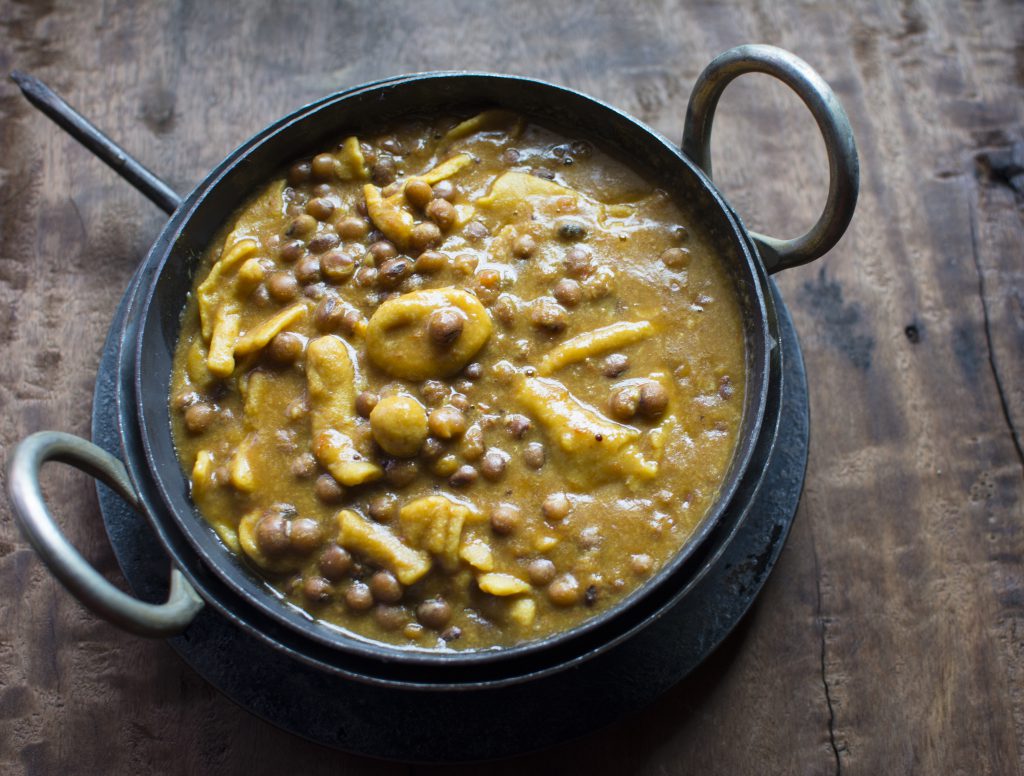
The recipe I share with you today is very rustic and earthy dish that makes a very wholesome meal. Tuver or the pigeon pea is widely used pulse in Gujarat. I particularly like to snack upon the boiled, salted and lightly spiced dried tuver or prepare a chaat like salad to much on..During winters, when the fresh tuver is in season it features on the menu everyday, while in monsoon or summers when veggies are scarce the Tuver na thotha (made with tuver pulse) along with Bajra or Jowar Rotla (millet flat bread) is regularly made. This dish featured regularly in my Nani’s kitchen where she teamed it up with Dhokli and rice. There is no special recipe for Tuver Na Thotha and each household prepares it differently. The recipe featured here is how it was made by my Nani.
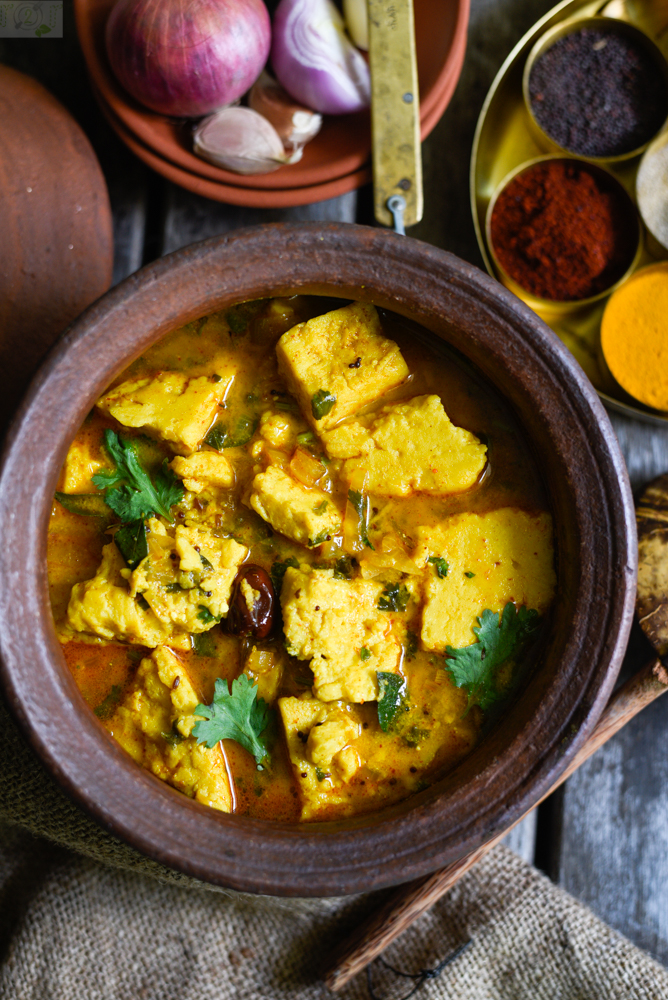
Dhokli nu Shaak can be termed as a Gujarati equivalent of the famous Gatte ki Subzi from its neighboring state of Rajasthan. This charming and rustic looking dish celebrates some very simple and staple ingredients of a Gujarati kitchen i.e. the besan and dahi, the two when mixed together go on to give us pillowy soft Dhokli. It is a simple no fuss dish that can satisfy the urge of binging on spicy food when eaten with a millet flat bread and a potent garlic chutney. Soul satisfying!! Have you ever noticed how we tend to fall back on such simple meals when our heart yearns for some zingy food. The Dhokli nu Shaak falls in that food category!! It absolutely livens you up with its spicy and sour taste.
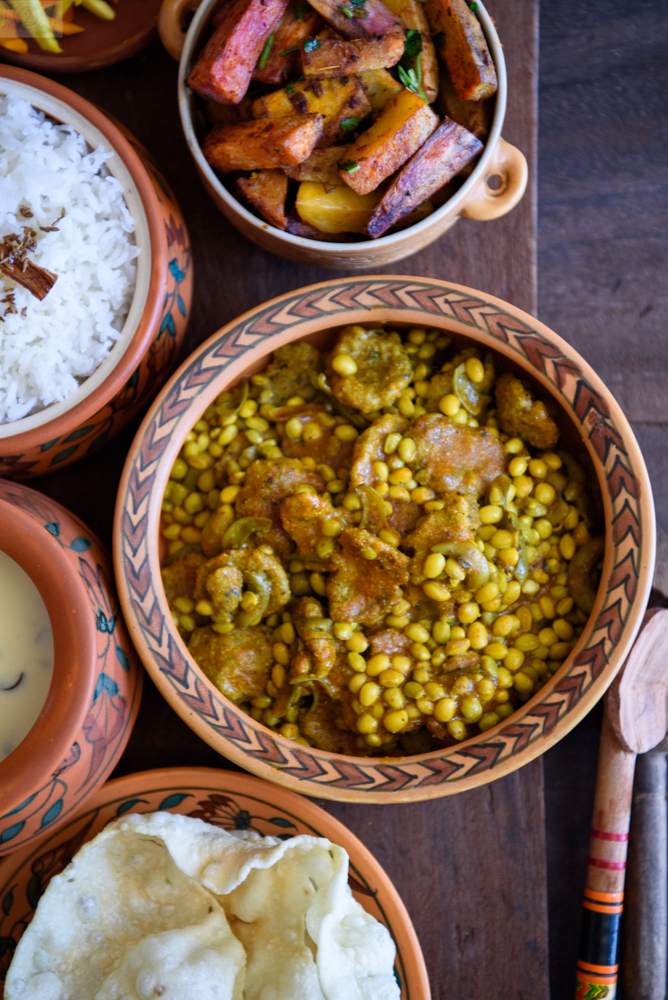
Papri na Lilva ma Bajri ni Dhokli / Green beans with millet pasta is a dish you will want make it atleast a few times when the tender green beans are in season. The wholesome dish with melt in mouth millet dhokli might invite apprehension in the begging but, it takes you to a completely different experience. We have been so used to eating the wheat+besan dhokli that it might concern us how boiled pearl millet dhokli would taste. However, the coarse texture of the bajri flour used in making the dhokli works like magic preventing it from becoming chewy or rubbery in texture!!
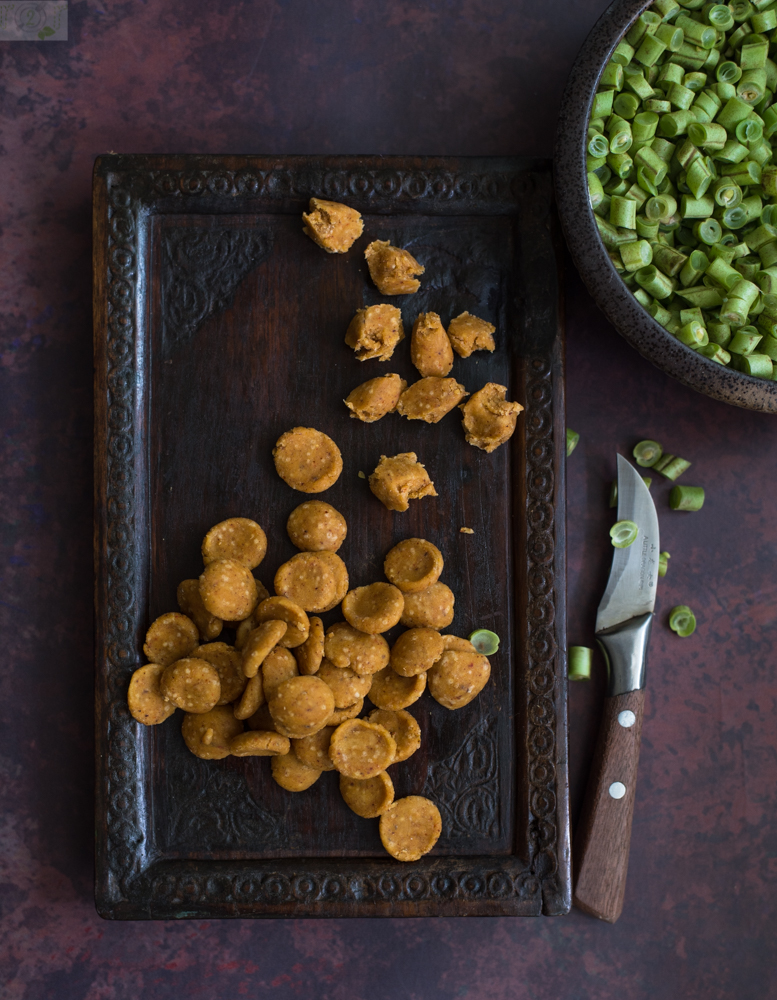
Fansi-Dhokli is a very popular subzi/curry we like to prepare when tender French beans are in season. The dhokli here are small marble sized balls pressed with a thumb to shape up as small discs with a slight indent.
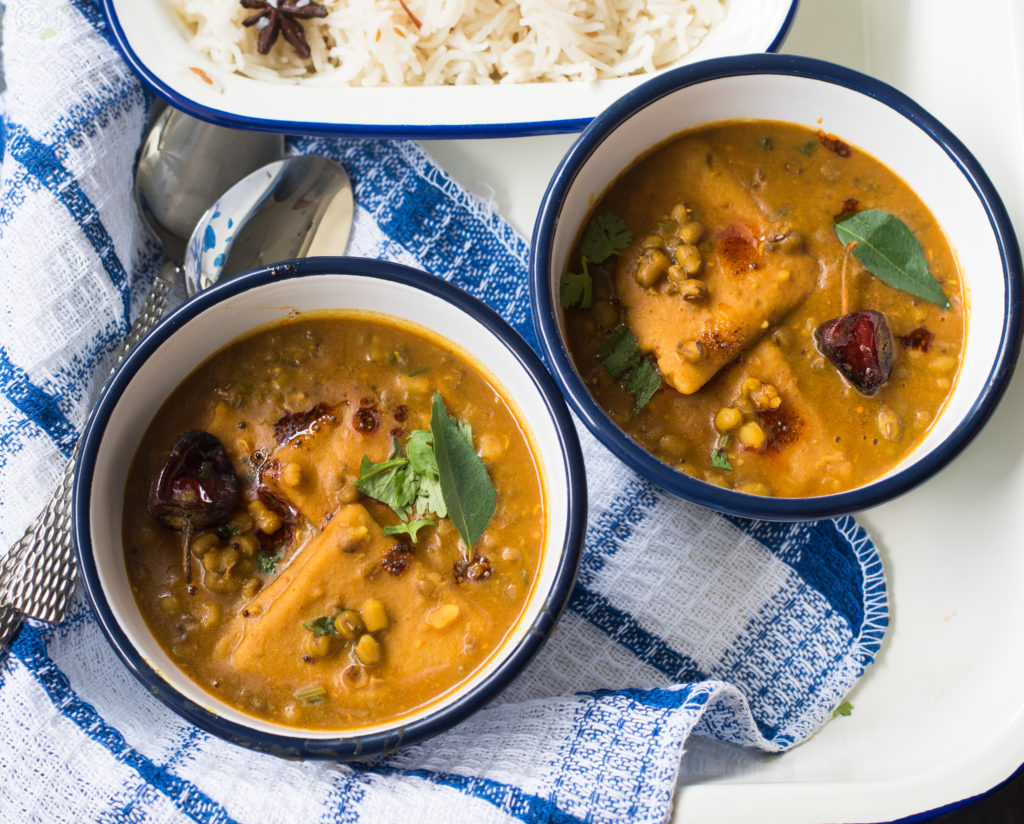
The Moong Dal Dhokli recipe shared here combines two very popular foods of Gujarat. Moong and Dhokli. The Dhokli made here is parika dhokli/envelop dhokli where it is folded to make petit triangles that puff up when cooked. Actually there isn’t any specific recipe to this dish, ingredients and measures can be adjusted to suit the family’s palate. Like all dal preparations the moong dal will need to be balanced in sweetness and sourness, whereas the consistency could be adjusted as preferred.
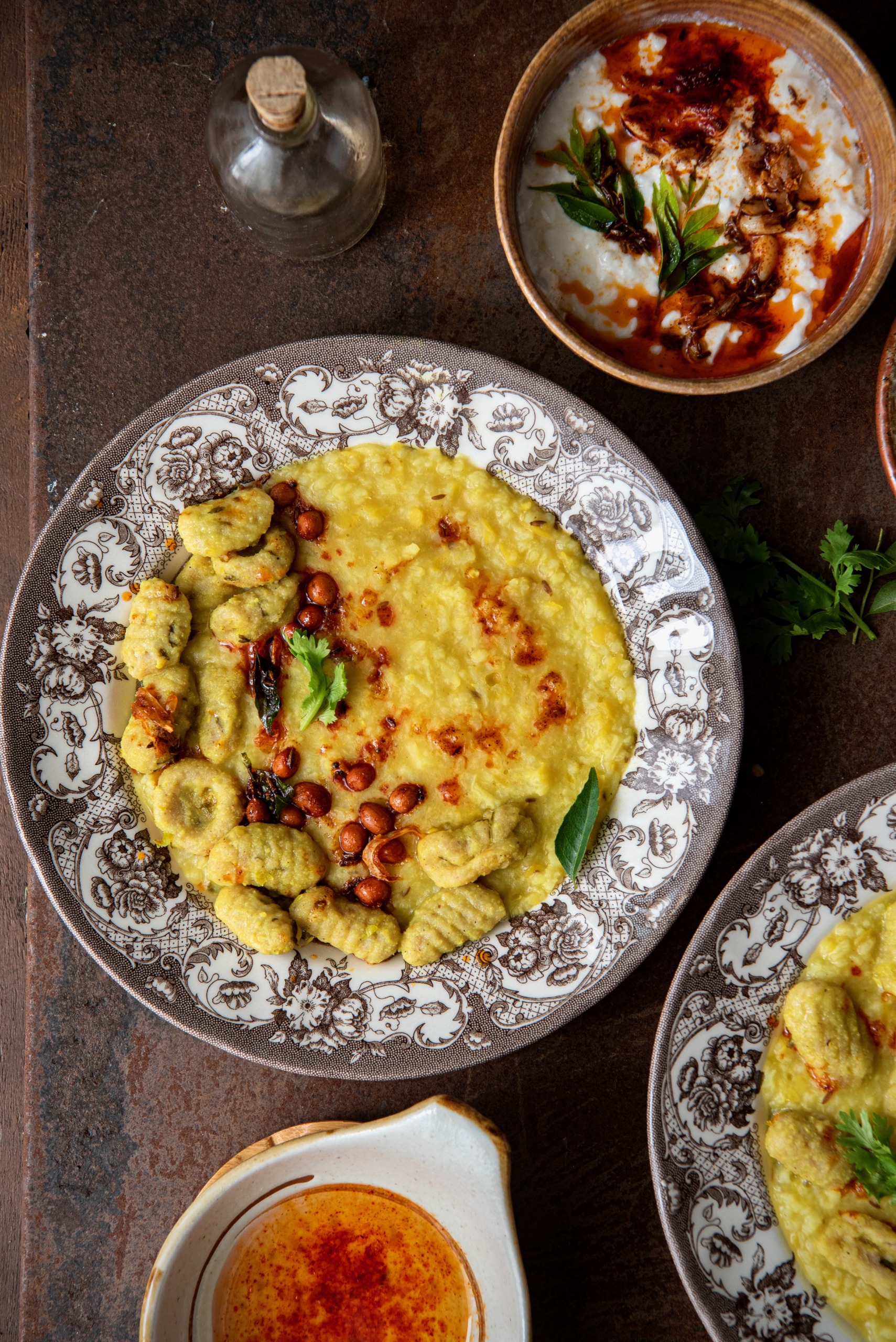
Slow cooked, one pot meals are easy to prepare and do not call for any special ingredients. This dish too proves to be just that. The jowar is a body cooling millet that is widely cultivated and consumed towards the south of Gujarat. The Krishna Kamod rice too is preferred for its cooling properties, try using fragrant variety of small grained rice for this Khichda. It does make a lot of difference in the aroma and flavours of the dish. Summers seem to be perfect time to cook up some one pot meals like these that call for post meal siesta
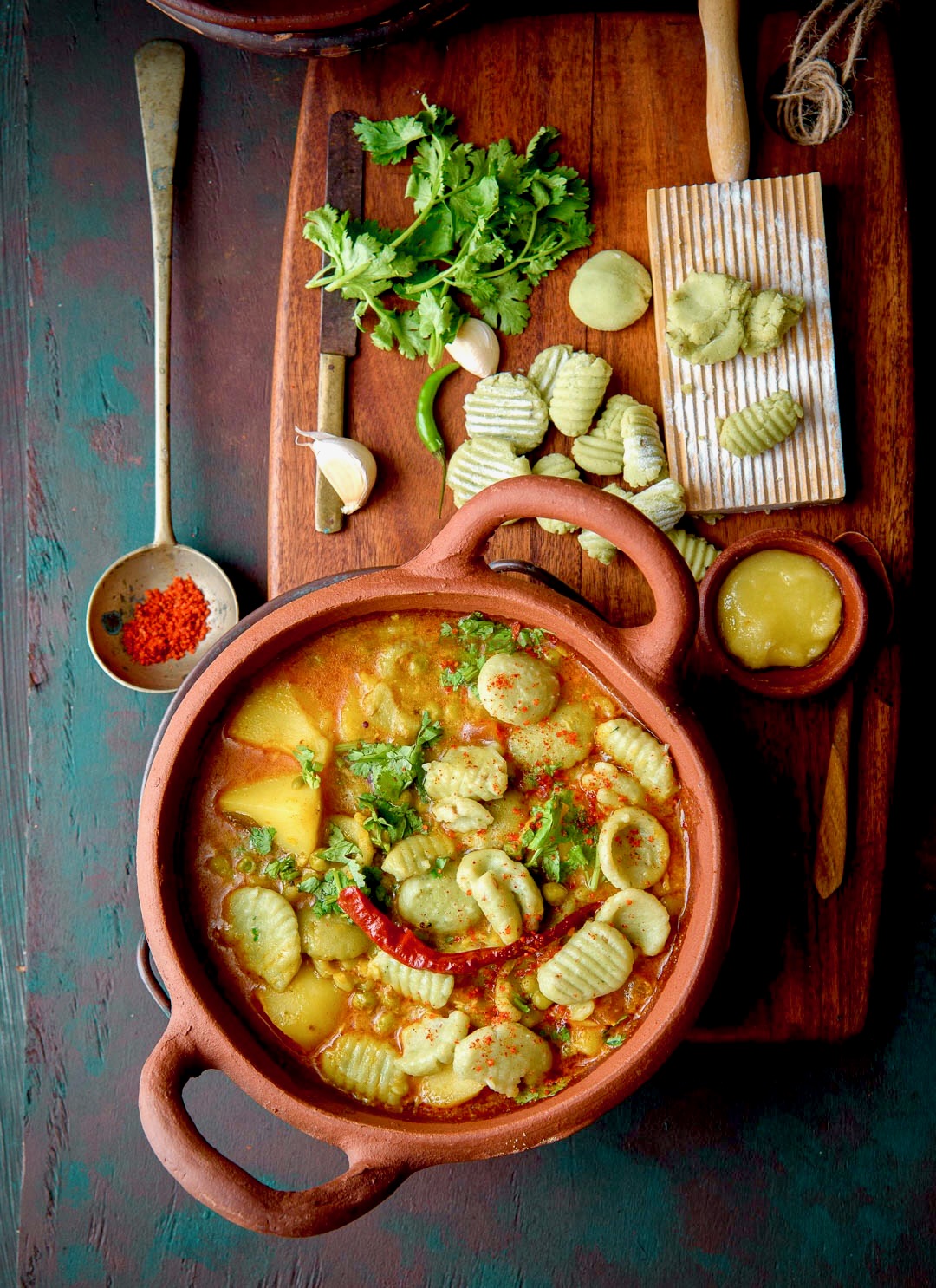
These pastel green rice dhokli ( I chose to shape as gnocchis) here takes the steamed rice dough/Khichu to next level. The rice flour is cooked in boiling water that has been spiked up with pureed coriander, green chillies and ginger. Once cooked, you knead it well and shape it in petit dhokli shapes you prefer. The Dhokli are then immersed and further cooked in a simmering stew of Aloo+Matar!! A dollop of ghee and sprinkle of methiyo masala!! A one-pot wholesome meal !! Siesta! Bliss !!
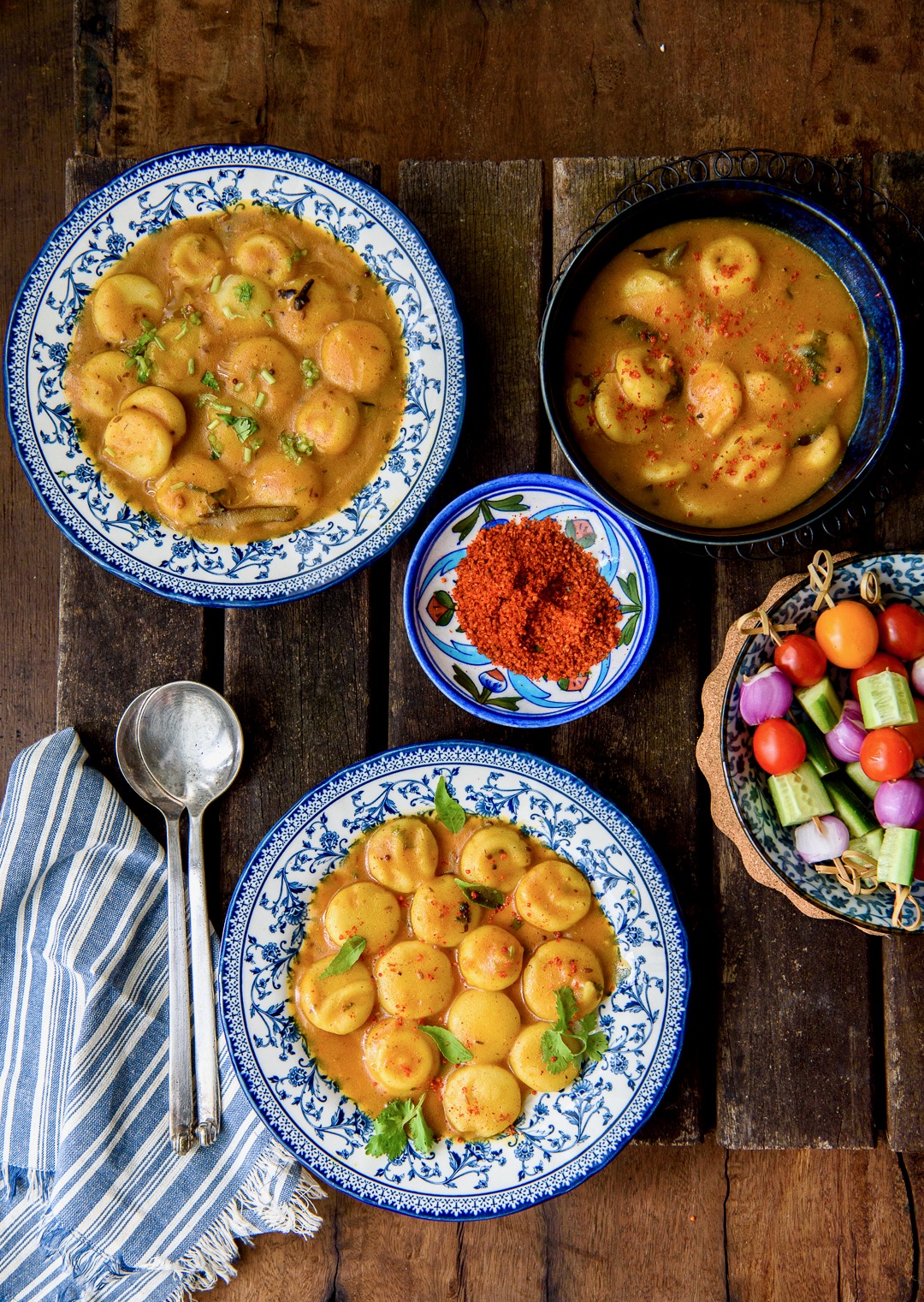
Interestingly, Warsha and I connected over my stuffed Dhokli post on Instagram. And here we are doing a Dhokli post, together. I am so grateful to her for sharing the soulful Chinchni-Gujarati cuisine with us. Theroute2roots has given me so many regional Gujarati foods to talk about and the cuisines that evolved when the enterprising Gujaratis immigrated to distant lands and adapted and blended into the region. We have explored the East-African Gujarati cuisine on the blog. It gives me great pleasure to share the Gujarati cuisine of Chinchan region with the very generous and gracious Warsha Vimadalal, whose family has roots in the region. Hopefully, we shall be sharing a lot of recipes that evolved as a result of immersion of Chinchni and Gujarati cultures.
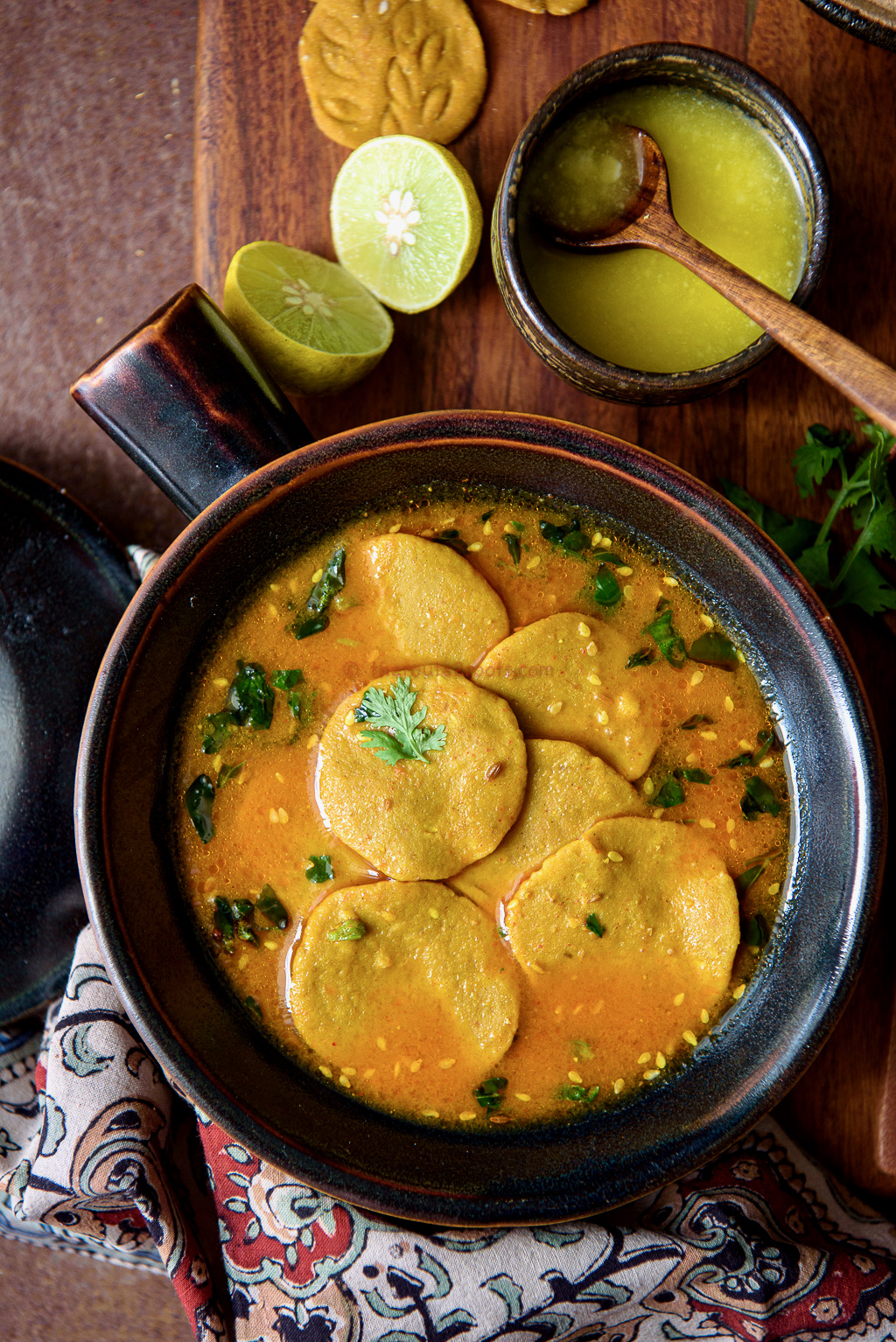
Isn’t food supposed to be like so, frugal yet delicious, cooked with minimum effort and ingredients but maximum on flavour and value? Uchada Pani ni Dhokli, the charm of this name does get lost when transliterated, into Dhokli in boiling broth. However, to those conversant with Gujarati the name sounds like Ba instructing us to when to add Dhokli discs into the broth,Uchadvu means to jump, bounce represents roaring boil here, telling us to add the dhokli discs to the broth that is on a roaring boil. And to allow them to cook on high.
https://www.theroute2roots.com/uchadta-pani-ni-dhokli-when-food-is-frugal-yet-delicious/
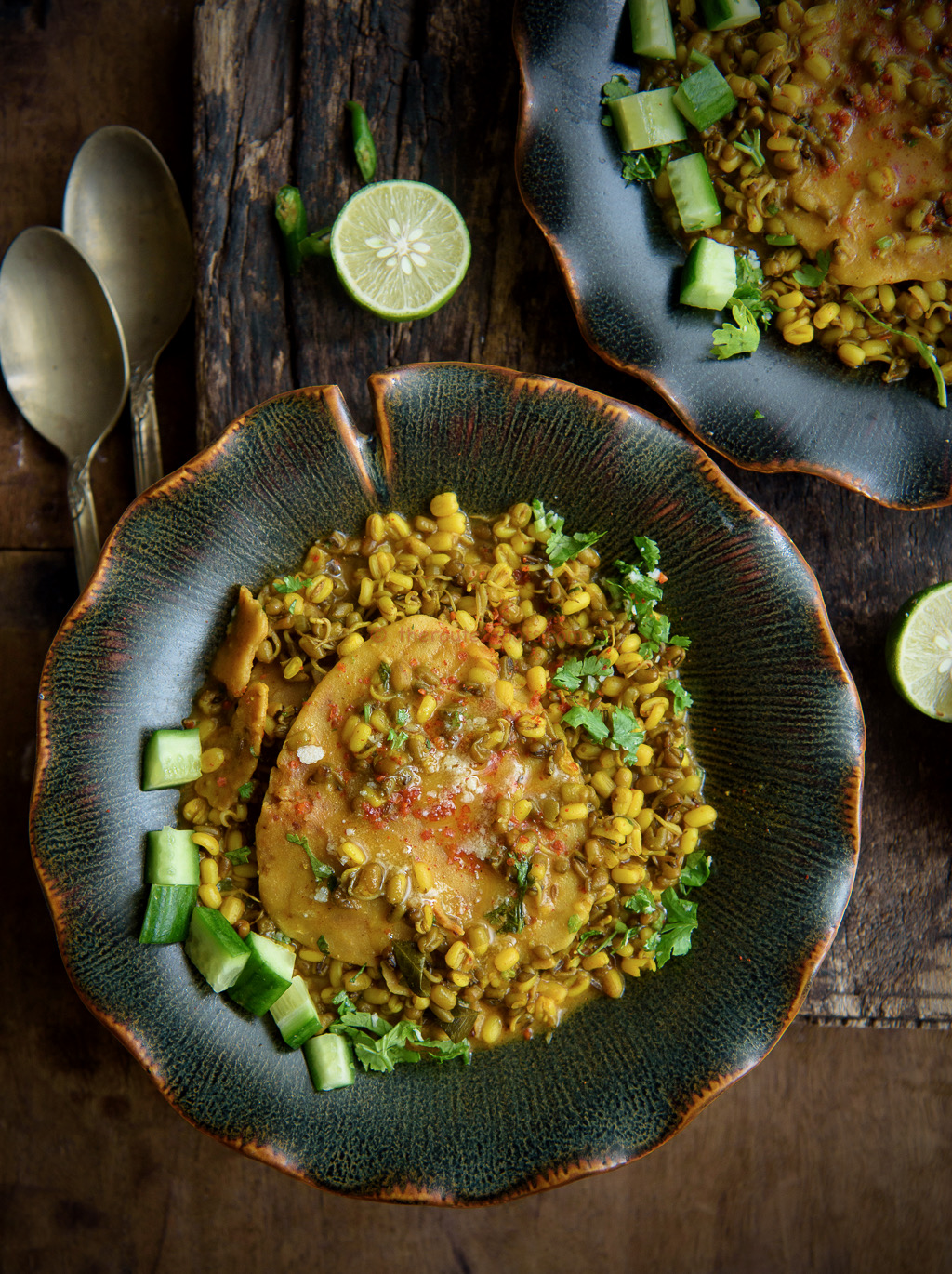
A few months into the lockdown, Sunny DM-ed a picture of his thali with Mug ma Patra he was having for lunch and how he cherished the foods his Nanima and Mummy cooked. I could comprehend the dhokli part but never knew that sprouted moong beans too had dhokli added to it. Sunny’s Nanima called dhokli ‘Paatra’, something that intrigued me further. Such an ingenious name. We chatted about the dish and how it might have earned its name, maybe the region of his ancestry or the influence of the region they later spread their roots. Traditionally, the dough for dhokli has masala-daan spices added to it, but Sunny’s version had roti dough rolled in puri sized discs, with a smearing of ghee/oil and a sprinkling of methi masala/gujarati achar masala, the discs are folded into triangles and rolled into petit packets or padiku (there is another version here). As the patra cook with the moong beans, “some of them might disintegrate, but that is also fun as they become melt in the mouth as the texture is very soft,” Sunny shares as I kept inquiring about the cooking part of the Mug ma Patra.
https://www.theroute2roots.com/mug-ma-patra-dhokli-envelopes-in-sprouted-moong-beans/
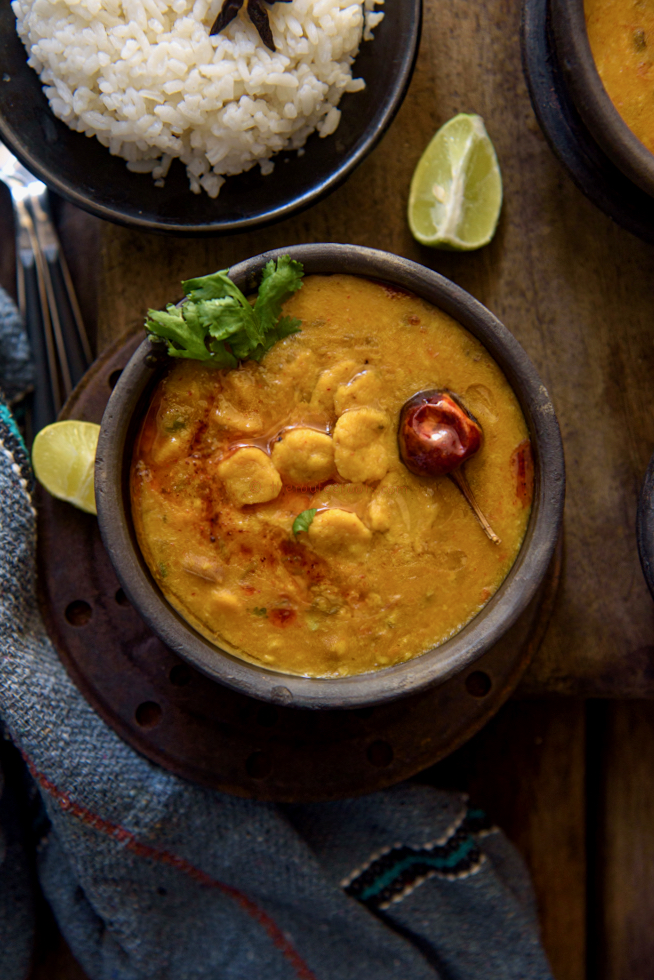
This was a few years ago; I remember it was Srujan’s post or story on Instagram where she talked about a few of her favourite food shows on Youtube, and Pasta Grannies was one of them. Since then, I have been hooked on this delightful documentation of Italian grannies making past from scratch. And somewhere through the episodes, I draw parallels with the range of Dhokli we have in regional Gujarati cuisine. If the sheer variety of accompanying sauces Pasta Grannies share makes red pasta sauce look mundane, the wide-ranging Dhokli in our repertoire makes the much loved Sunday special toor dal-dhokla look stodgy. Gujaratis enjoy Dhoklis in more ways than we have imagined; it is only that we have yet to list them.
https://www.theroute2roots.com/mug-ni-dal-ma-chuteli-dhokli-this-one-is-packed-with-robust-flavours/
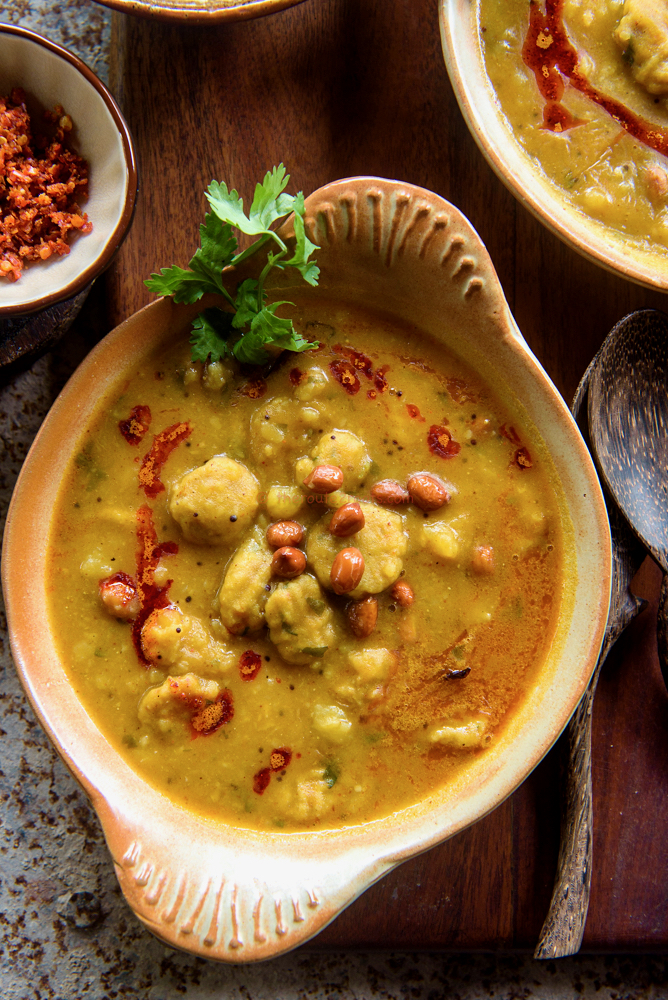
Dhokli meals are a bundle of joy and comfort combined with the ease of cooking. They tickle the right spot. Always. I have never been a dhokli fan, yet I am having so much fun curating all these regional Dhokli recipes on the blog. This one here is Potato Dhokli in Potato Curry. Yes, the dhokli sounds like gnocchi, but this is a vegan version with bajri, and wheat flour added to it. The skill is to evoke the classic khatta-meetha taste of potato curry that was once an integral part of the Gujarati pangat meals. Crack that balance of flavor, and you are a winner. These somewhat fragile dhokli cook in the flavorful curry; one needs the skill to gauge the exact time to turn off the flame so that the dhokli are cooked and also hold their shape. Otherwise, it is fun; shape them as you like; the classic thumbprint works the best

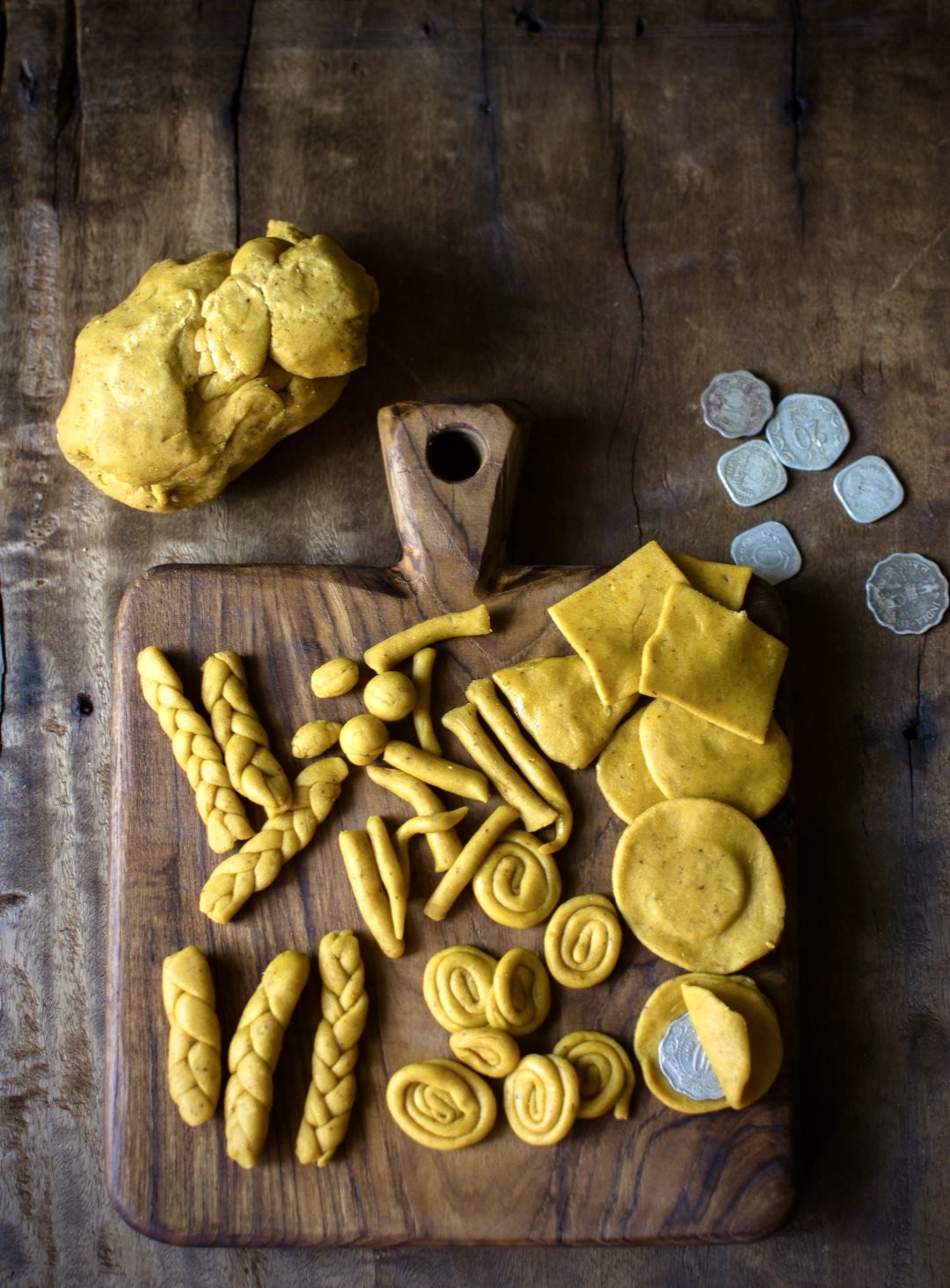

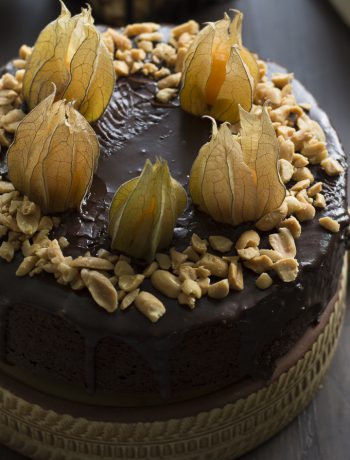
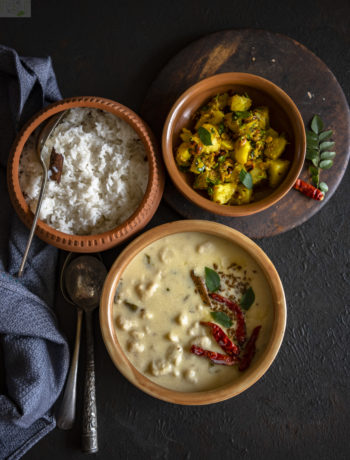
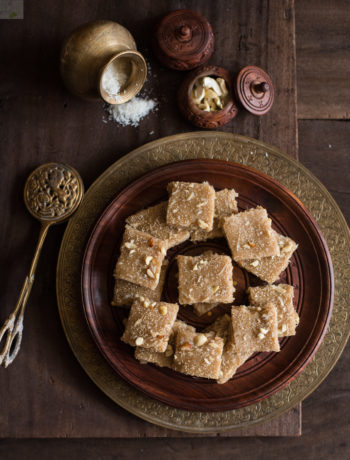
6 Comments
Kalla Mistry
October 5, 2020 at 11:30 amAbsolutely nice recipes!
Beautiful pictures and very well written.
Definitely going to try them all..yummy!
Thank you for sharing 🙏
Sheetal
October 14, 2020 at 7:47 pmThank you so much!! I am so glad you liked them.
Kokila shah
May 16, 2021 at 4:08 amSo creative of making different type of Dhokli, my daughter says she only knew I only made diamond ♦️ Shape.
Sheetal
May 25, 2021 at 2:51 pmIt is an efforts to make regular foods look enticing to a generation that appreciates food by pictures 😊. Glad you liked it.
Hema
February 3, 2022 at 8:34 pmThis is hands down one of the most beautiful blogs on Indian food that I have seen. And the recipes are phenomenal.
NP
December 11, 2024 at 4:36 pmGujarati pasta. History? Even the Shrikhand and puri seems like the Italian Canoli. There may have been a connection many many years ago. I’ll not put more dots.